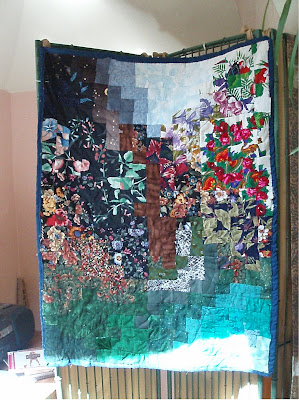
I’m over at Word Whores today, talking about banishing hobbies.
Tag: Word-Whores
A Work in Progress
I’m over at Word Whores today, talking about perfection and lack thereof.
Hit Me with Your Best Shot

I’m back from vacay and over at Word Whores today, talking books and getting hit on. Normal day at Word Whores.
The Fur Family

I’m over at Word-Whores today, introducing the Fur Family.
Hi, I’m Jeffe and I’m a Shoe Whore

I’m over at Word Whores today, confessing that it’s not just about the words.
Reconaissance Photos Are In

The Word Whores reader basket! For more, check my post on the Word Whores blog.
Welcome to RT Week

I’m at Word Whores today, introducing the upcoming week, which will be all about the Romantic Times Booklovers Convention. Forecast for this week: blog posts maybe scattered and manic, with a chance of babbling. I make no promises.
Ritual in Writing

I’m over at Word Whores, as I am every Sunday. Talking about writing rituals, my fave topic.
The More We Know
 I don’t mind the overnight snow, since we need the moisture. Dust storms have been clouding the valley. Even the daffodils don’t mind. They whispered that they’re built to withstand this kind of thing.
I don’t mind the overnight snow, since we need the moisture. Dust storms have been clouding the valley. Even the daffodils don’t mind. They whispered that they’re built to withstand this kind of thing.
Over at Word Whores – my group blog, if you didn’t know – we’ve been talking this week about drafting styles. Whether you plan it all out ahead of time or discover as you go. Whatever terms you may assign to to those styles, writers seem to fall pretty solidly into one court or another.
On Laura Bickle’s post from yesterday, she talks about her plotting method. The comments conversation has become very interesting, as other writers profess horror or admiration for her detailed outlines.
That she does *before* she writes the book. Ahem.
At any rate, in the comments, the issue of revising came up. It’s long been the lore that the great drawback of not plotting ahead of time is that you spend a lot more time revising. KAK, who is a german dictator under all that red hair and those pretty smiles, declared that every scene must pass the “purpose” test. If it doesn’t serve the overall story, off it goes.
She’s ruthless. Believe me, I know.
I can see her point. And definitely the revising process is more cerebral than drafting for me. The drafting is all about the misting along and letting anyone and everything into the story. Revising brings the critical lens to the entire arc of the story. I’m not sure anyone can revise in a subconscious, misty way.
Except.
Okay, I’m a self-confessed sub-conscious, dreamthink, misty writer. I do believe the stories and characters exist in some reality and reveal themselves to me. I rarely feel like I “think” them up. Sometimes I can’t logically defend why someone or something is there. The critical lens would have me delete that stuff. The purpose test would demand excision. Goal, motivation, conflict? They scoff at these bits.
This is where my gut comes in. Neither the conscious, nor the subconscious, but the deep part that is most me. If I don’t trust that part, then I’m not me, for better or worse. The GMC stuff (see above) arises out of classic storytelling. People like to talk about archetypes of the hero’s journey and so forth. The thing is, archetypes, which Jung originally described as subconsciously shared concepts are something, by definition, already exist inside us. We can critically analyze them, but on some levels, they defy conscious definition.
No, I can’t always defend the purpose of a scene. Sometimes it’s because the scene is junk, or something I needed to write through to get somewhere. But one of the most surprising things I discovered over the ten years I spent writing and publishing essays – the things people keyed in on the most, were those things I had not planned. Scenes or images that just popped up when I was writing. Things that, sometimes, I nearly skipped writing, or thought about deleting later, because they seemed extraneous.
I keep reminding myself of that lesson.
Play Misty for Me

I’m over at Word Whores today, talking about Pantsing vs. Plotting.
(I know, I know – as usual.)